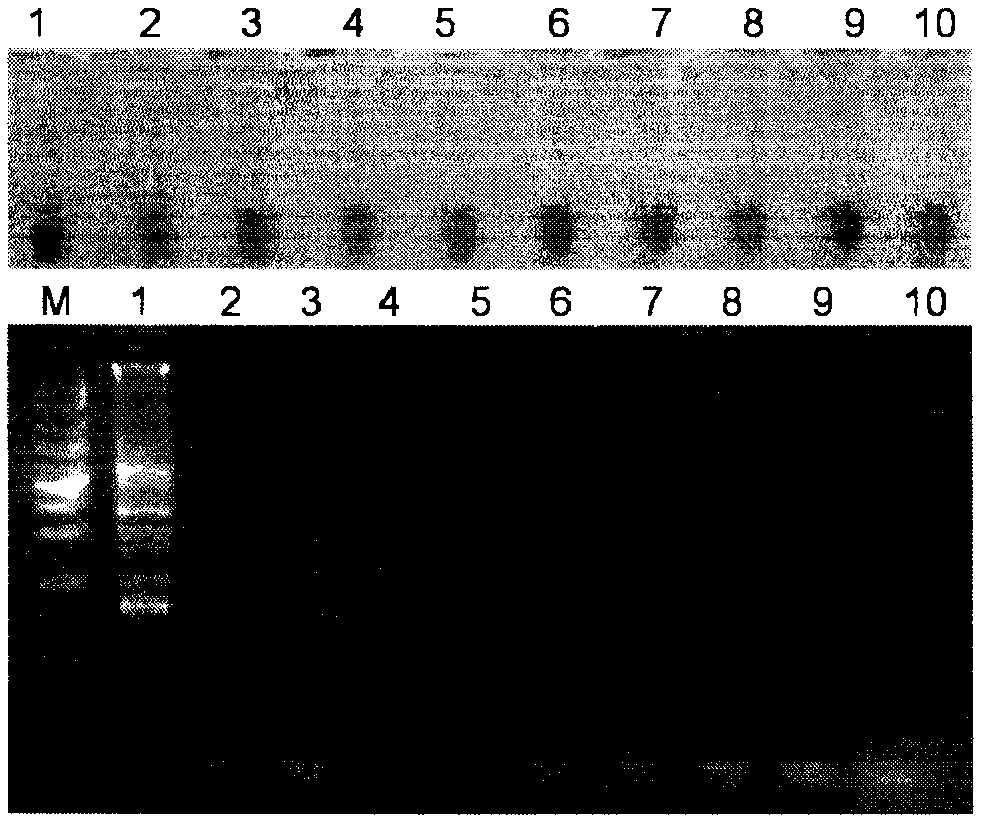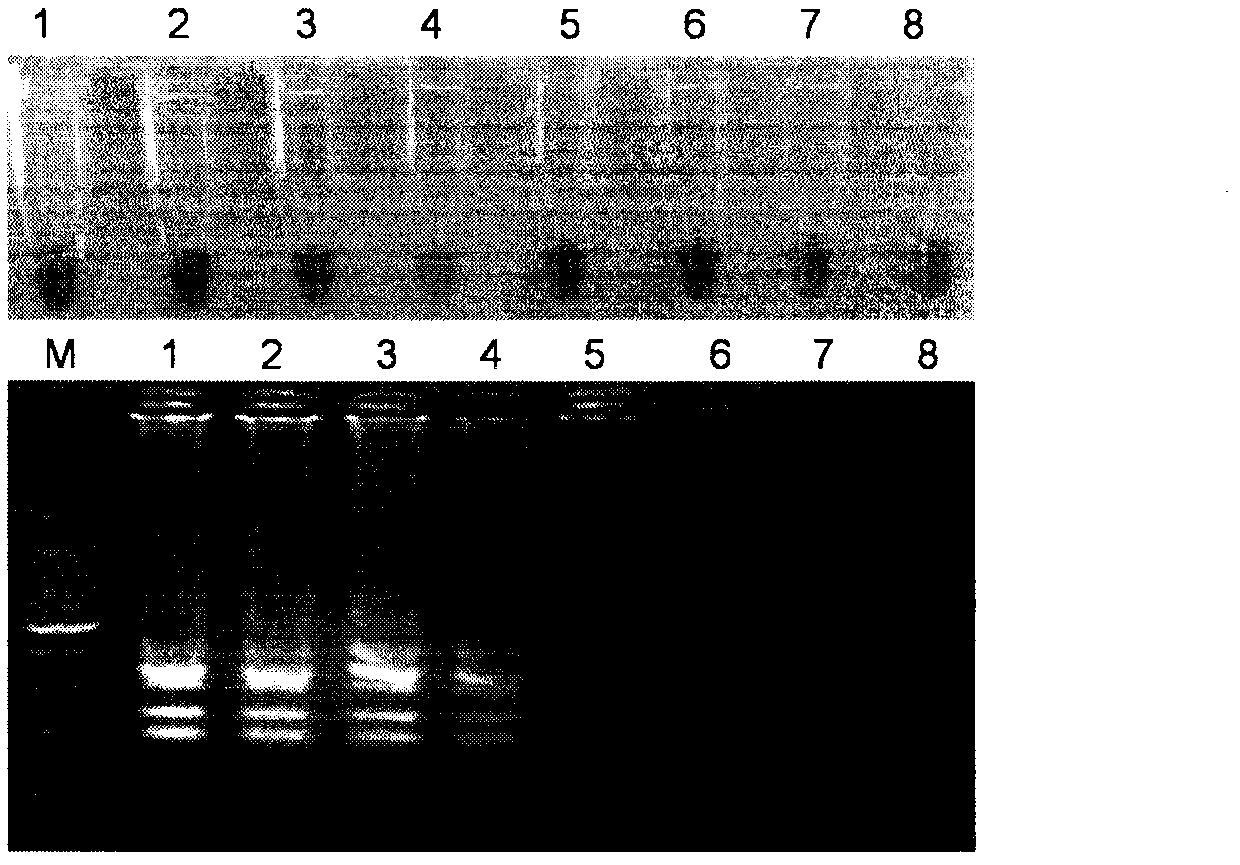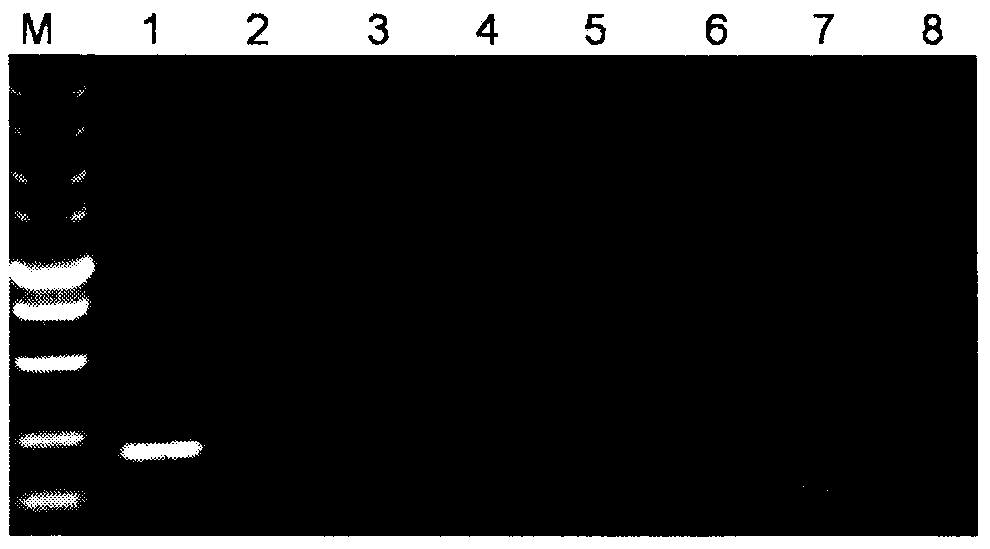LAMP technology based rapid Botrytis cinerea detection method
A rapid technology for Botrytis cinerea, applied in biochemical equipment and methods, microbiological determination/inspection, etc., can solve the problems of rapid molecular detection of LAMP of Botrytis cinerea, so as to timely understand the development of pathogens and reduce environmental pollution , The effect of reducing the probability of false positive occurrence
- Summary
- Abstract
- Description
- Claims
- Application Information
AI Technical Summary
Problems solved by technology
Method used
Image
Examples
Embodiment 1
[0032] Embodiment 1 LAMP reaction system optimization
[0033] In order to save detection cost and ensure the stability and reliability of the detection method, the experiment was performed on Bst DNA polymerase (8U / μL) (1U-12U), Mg 2+ (25mM) concentration (1-8μL), primer FIP / BIP (40μM) and F3 / B3 (20μM) concentration (0.25-2μL), betaine (8M) concentration (0.125-4μL), HNB (2.5mM) concentration ( 0.25-2μL) was optimized, and the best reaction system was determined to be: Bst DNA polymerase (8U / μL) 1μL, 10×ThermoPol 2.5μL, MgCl 2 (25mM) 3.0μL, dNTP (10mM) 2.5μL, FIP (40μM) 0.75μL, BIP (40μM) 0.75μL, F3 (10μM) 0.5μL, B3 (10μM) 0.5μL, betaine (8M) 2.0uL, HNB (2.5mM) 1.5μL, Genomic DNA 1.0μL, dH 2 O (sterilized distilled water) 9.0 μL.
Embodiment 2
[0034] The optimization of embodiment 2 LAMP reaction conditions
[0035] In order to obtain the most suitable reaction temperature and time and ensure the high efficiency of the detection method, the reaction μL in the reaction parameters of the experiment, F3 (10μM) 0.5μL, B3 (10μM) 0.5μL, betaine (8M) 2.0uL, HNB (2.5mM) 1.5μL, Genomic DNA 1.0μL, dH 2 O (sterilized distilled water) 9.0 μL.
[0036] Embodiment 2 LAMP reaction condition optimization
[0037] In order to obtain the optimum reaction temperature and time and ensure the high efficiency of the detection method, the experiment optimized the reaction temperature (60-65°C) and time (15-90min) in the reaction parameters, and finally determined the optimum reaction temperature and time are 63°C and 45min, respectively.
Embodiment 3
[0038] Example 3 Detection of LAMP reaction sensitivity
[0039] In order to determine the lower limit of detection of the LAMP reaction, in this experiment, the kit was used to extract and purify genomic DNA as a template, which was diluted in a 10-fold gradient. Using the above-mentioned diluted genomic DNA as a template, LAMP and PCR amplification were performed respectively. From figure 2 and image 3 It can be known that the lowest detection limit of LAMP technology is 1pg, while the detection limit of ordinary PCR is only 10pg.
PUM
 Login to View More
Login to View More Abstract
Description
Claims
Application Information
 Login to View More
Login to View More - R&D
- Intellectual Property
- Life Sciences
- Materials
- Tech Scout
- Unparalleled Data Quality
- Higher Quality Content
- 60% Fewer Hallucinations
Browse by: Latest US Patents, China's latest patents, Technical Efficacy Thesaurus, Application Domain, Technology Topic, Popular Technical Reports.
© 2025 PatSnap. All rights reserved.Legal|Privacy policy|Modern Slavery Act Transparency Statement|Sitemap|About US| Contact US: help@patsnap.com



